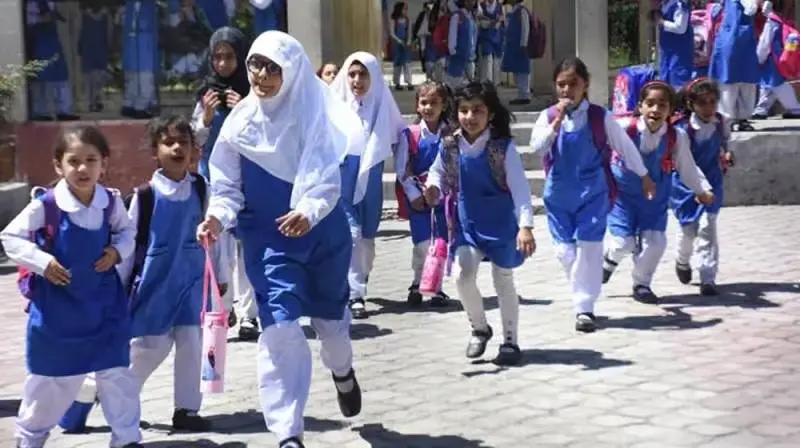Every year, as temperatures drop and the days grow shorter, schools across Pakistan and other regions implement winter timings to ensure comfort and safety for students and staff. While these changes are primarily aimed at addressing the cold weather and morning fog, they also have a notable impact on teachers’ daily routines, productivity, and overall workload. The effect of winter timings on teachers’ workload is a multifaceted issue that touches on classroom management, lesson planning, assessment schedules, and even teachers’ personal well-being.
This article explores the positive and negative impacts of winter timings on teachers, focusing on workload distribution, classroom efficiency, and institutional challenges, while suggesting practical solutions to maintain a balanced teaching environment.
Understanding Winter Timings in Schools
Winter timings refer to the seasonal adjustment of school hours—usually delaying the start of the school day by 30 to 60 minutes to accommodate colder mornings. For instance, schools in Punjab, Pakistan, often shift from 7:30 a.m.–1:30 p.m. (summer) to 8:30 a.m.–2:30 p.m. (winter). This change aims to protect students and staff from harsh morning temperatures and ensure better attendance.
However, while students benefit from warmer mornings and safer travel conditions, teachers face several adjustments that influence their workload and time management.
How Winter Timings Affect Teachers’ Workload
1. Condensed Teaching Hours
One of the most direct effects of winter timings is the compression of teaching hours. Since school days start later but often end at nearly the same time, teachers have less time to cover the syllabus. This compression leads to:
-
Shorter periods or reduced break times.
-
Increased pressure to finish lessons quickly.
-
Limited time for student interaction and doubt clarification.
Teachers must often redesign lesson plans to fit within reduced time frames, increasing preparation work outside of school hours.
 Read Also
Read Also
2. Extended After-School Responsibilities
Many teachers handle extracurricular activities, administrative duties, and paper marking after school. With winter timings pushing the school day later into the afternoon, teachers find themselves working longer into the evening. This can result in:
-
Extended working hours at home for marking and preparation.
-
Reduced daylight for commuting, especially for female teachers or those traveling from rural areas.
-
Less personal or family time, affecting work-life balance.
3. Increased Administrative Pressure
School administrations often try to maintain academic schedules, examinations, and extracurricular events despite shorter days. This adds administrative pressure on teachers to meet deadlines and maintain performance standards. Teachers may have to:
-
Conduct make-up classes or extra sessions.
-
Handle evaluation tasks within tighter deadlines.
-
Attend staff meetings that now fall after official hours.
These factors cumulatively lead to higher stress and decreased rest time.
4. Impact on Classroom Environment
The cold weather itself impacts both teaching and learning. Teachers must manage:
-
Low student engagement in chilly mornings.
-
Reduced classroom energy, especially during the first few periods.
-
Technical issues such as malfunctioning projectors or heating shortages.
Maintaining focus and participation in such conditions demands extra effort and creativity, adding to teachers’ emotional and cognitive workload.
5. Lesson Planning and Adjustments
Winter timings require teachers to revise lesson plans, assessments, and pacing guides. In subjects like science or mathematics, where conceptual understanding is crucial, the reduced instructional time can hinder depth of learning. Teachers may need to:
-
Assign more homework to compensate for shorter lessons.
-
Use digital learning tools or blended teaching strategies.
-
Restructure revision schedules before exams.
The administrative work of re-planning syllabi consumes additional hours beyond regular teaching duties.
6. Health and Productivity Concerns
Cold weather can directly affect teachers’ physical and mental well-being. Common issues include:
-
Seasonal illnesses like flu, cough, and fatigue.
-
Difficulty in maintaining morning punctuality due to low temperatures.
-
Decreased energy levels and motivation during shorter daylight hours.
Such health-related challenges can indirectly affect classroom performance and increase absenteeism, further burdening remaining staff.
Positive Effects of Winter Timings
While challenges exist, winter timings are not entirely negative. Several benefits can be observed when schedules are managed efficiently:
1. Safer and More Comfortable Mornings
Late school starts mean teachers no longer have to commute in the freezing cold or thick fog. This reduces the risk of accidents and improves overall comfort.
2. Improved Attendance
Teachers and students are more likely to arrive on time when schools open later, reducing disciplinary issues and enhancing punctuality.
3. Better Focus During Midday Hours
When the school day aligns with warmer daylight hours, teachers and students tend to stay more active and attentive, especially during core learning periods.
4. Flexibility in Teaching Methods
The need to adjust schedules often encourages teachers to adopt modern teaching aids, such as e-learning platforms or flipped classroom models, fostering innovation.
Institutional Measures to Reduce Workload Pressure
Schools and education departments can adopt several strategies to minimize the negative effects of winter timings on teachers’ workload:
1. Balanced Timetable Management
Administrations should distribute subjects wisely, avoiding clustering of complex subjects in early cold hours. Flexible scheduling can help maintain energy and focus throughout the day.
2. Use of Digital Tools
Integrating smart boards, recorded lectures, and online quizzes can save classroom time while keeping students engaged. These tools help teachers manage the syllabus more efficiently.
3. Enhanced Staff Support
Schools should provide adequate heating, hot beverages, and comfortable staff rooms. Supporting teachers’ health and morale can significantly boost productivity.
4. Curriculum Adjustment
The education department can temporarily adjust lesson requirements or postpone certain non-core activities during peak winter months to ease pressure.
5. Communication and Collaboration
Encouraging teamwork and sharing of teaching resources among teachers can reduce duplication of effort and enhance mutual support.
Teachers’ Perspective: Maintaining Balance
For teachers, maintaining balance during winter timings requires effective time management and self-care. Strategies include:
-
Preparing lesson outlines in advance.
-
Prioritizing key topics and reducing excessive paperwork.
-
Taking short breaks to avoid burnout.
-
Using digital resources for quick assessments and attendance tracking.
When teachers maintain a proactive and organized approach, they can adapt more smoothly to seasonal transitions without compromising quality.
Summary
The effect of winter timings on teachers’ workload is both practical and psychological. While the shift aims to safeguard health and safety during cold months, it inadvertently increases workload pressures through condensed schedules and extended after-hours duties. To balance these effects, both teachers and school administrations must adopt flexible strategies—leveraging technology, improving coordination, and ensuring supportive working conditions.
Ultimately, the success of winter timings depends on how well schools can harmonize comfort, productivity, and educational standards. By recognizing teachers’ vital role and addressing their workload challenges, education departments can ensure that seasonal schedule changes serve their purpose without compromising teaching quality.






